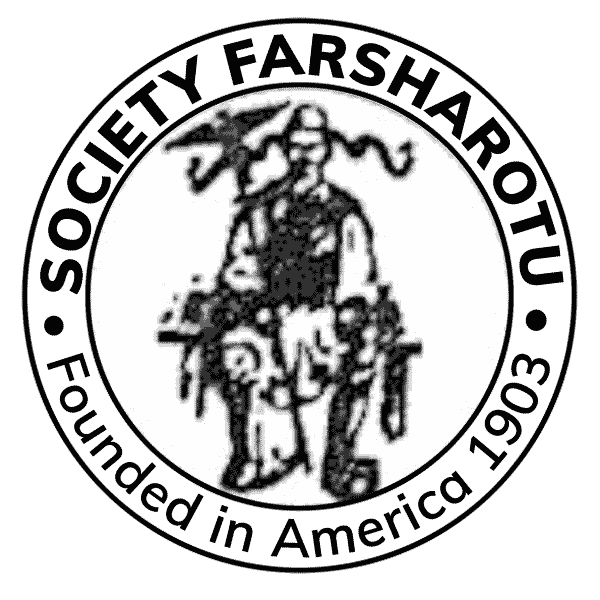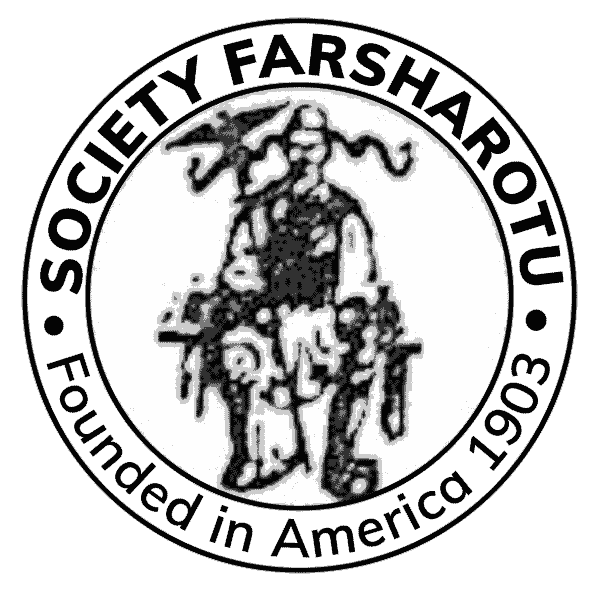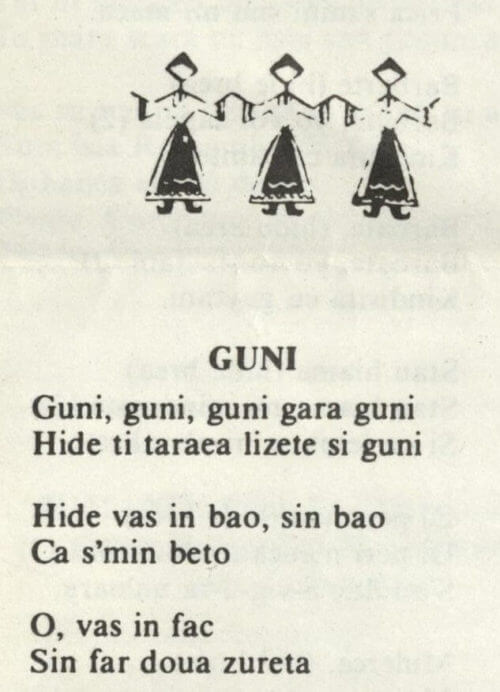HARALAMBIE GEORGE CICMA: AN AUTOBIOGRAPHIE A Vlach’s Life in His Time Part VII
Ioana Dafula, the mud-girl, and her father came to this country about the middle of October, 1915. Ioana and my cousin Atha’s wife, Mary, had been good friends in the old country. Ioana was only about sixteen years old at this time and I did not pay much attention to her—a scrawny little girl! Mary ...
Read More →
FORGOTTEN VOICES: AROMANIANS IN MACEDONIA (1900-1941)*
by Nikola Minov Abstract: This study examines the demographic and cultural transformations of the Aromanian pop- ulation in Macedonia from the early 20th century through the interwar period. It explores how the Aromanians navigated their complex identity amidst the pressures of Greek and Romanian influence while adapting to the changing political landscape. The research also ...
Read More →
Linguistic Profiling of Heritage Speakers of an Endangered Language: The Case of Vlach Aromanian–Greek Bilinguals
by: Alexandra Prentza and Maria Kaltsa Abstract: This is the first attempt to profile the heritage speakers of an endangered spoken-only variety of Vlach Aromanian in Greece. Neither the variety nor its speakers has been investigated before; hence, the study also aims at evaluating the exact state of endangerment of the Sirrako variety, as this ...
Read More →
Wedding Traditions and Customs of the Aromanians of Dobrogea
by Luciana Maria C Ficea Abstract: Traditions and customs are a set of conceptions, traditions, and beliefs that remain throughout history within both social and national groups and that are transmitted by word of mouth from father to son, constituting for each social group its specific feature. Each habit presents valuable charges and deep meanings ...
Read More →
A Vlach Nun and Her Thirteenth-Century Monastery
author: Sofia Pitouli Abstract: This thesis examines the destroyed thirteenth-century monastery of Lykousada, located at Loxada, in Thessaly and founded by the nun Hypomone. A surviving chrysobull issued by Andronikos II in 1289 mentions Hypomone exclusively in terms of her monastic foundation. An analysis of the lands belonging to the monastery place Lykousada within thirteenth- ...
Read More →
Michael Costulas songbook
Download and enjoy these songs from the Michael Costulas songbook. NOTE: these are historical documents and are not meant to reflect the current views of the Society Farsharotu.
Read More →
Haralambie George Cicma Autobiographie Part VI
(Continued from last issue) PART VI NEWPORT, NEW HAMPSHIRE I took the train from that despised and detested town and traveled toward New Hampshire and I found that the views, especially the moun- tains, reminded me of Macedonia. My first impression of Newport was that I had been transported back to Turia-Kragna; the town was ...
Read More →
Golfu: dramâ Armâneascâ tu tsintsi acti
Download Golfu: Golfu Dramâ Armâneascâ tu tsintsi acti
Read More →
The Macedo-Romanians in America, by Father Hategan
Note: *The Society reprints this article solely for its historical interest to the Aromanian community in the U.S. We do not endorse the views expressed in the article that we are Romanians or “Macedo-Romanians” – we are simply Aromanians whose national allegiance is to the United States. This article appeared in the Romanian Heritage Society ...
Read More →
Vlachs in the Lowland Areas: Between the Bükk Mountains and the Tisza River in the 15th Century
by Jarosław Buniowski Abstract Although mountains and submontane areas were the main territories of development for the Wallachian colonization, the Vlachs would also appear in the lowland areas, situated further away from the mountains. The presence of Vlachs in the valley between the Bükk Mountains and the Tisza River in the 15th c. is an ...
Read More →
Representation Structures of Aromanian Communities at the Beginning of the 20th Century – Communities and Ephorates
by Emanuil Ineoan As early as the end of the 19th century, Romania had become a significant player in Balkan geopolitics. This was also fueled by the interest that the Kingdom of Romania showed towards to the Aromanian communities since the second half of the 19th century. The Romanian state, to be noted, at the ...
Read More →
An Unpublished Demographic Survey Regarding the Aromanian Communities in Greece during the Second World War
by Emanuil Ineoan Abstract: Within the manuscript section of the Romanian Academy Library, there is a document bearing a challenging title for the researcher interested in the Balkan Romanity: “Some Statistical Data on the Number of the Macedo-Romanian/Aromanian Population of Greece (Macedonia, Epirus and Thessaly).” The manuscript was donated in 1963 by the author’s wife, ...
Read More →
The coexistence of separation and integration rites in the Nuptial Repertoire of the Cipan Aromanians in Dobruja
by Mirela Kozlovsky Keywords: ethnomusicology, folklore, wedding songs, traditions, threnody Abstract: Dobruja hosts the most numerous Aromanian community in Romania. In her book Dodecalog al aromânilor (Dodecalogue of the Aromanians), philologist Matilda Caragiu Marioţeanu defines Aromanians as having always been South-Danubian and being the descendants of the populations of South-Eastern Europe either Romanised or colonized ...
Read More →
Manners of maintaining the cultural identity of the Greeks, Aromanians, Lipovans and Dobrogean Tatars and their effects in musical practice
by Mirela KOZLOVSKY Abstract: This study presents the mutual conditioning between the social dynamics and the traditions of the ethnic communities of Dobrogea, as well as the ways of maintaining the cultural identity of the Greeks, Aromanians, Lipovans and Tatars in the full era of globalization. For a clearer understanding, we will highlight how the ...
Read More →
Aromanian Vlach and Greek: Shifting Identities
by Alex De Lusignan Fan-Moniz Abstract In modern times, with Greek being the only language of instruction and communication in the wider society (Chomsky, 1971), Aromanian’s linguistic and cultural shift has been so profound that this language is now endangered (Dinas et al., 2011) in Greece. Aromanian (Weigand, 1895) is an oral Eastern-Romance language spoken by ...
Read More →
Elements of Aromanian Phraseology
by Dumitru Carabas Abstract The phraseological material that I will present shows that contemporary Aromanian has a tremendous wealth of meaning, incorporating and being able to convey emotions, feelings, moods, irony, life experiences. The phrasemes appear as genuine diamonds, arising from the compression process of experiences, thoughts, feelings, fears, joys and ironies in synthetic expressions ...
Read More →
AGNOMENS AND NICKNAMES IN AROMANIAN ONOMASTICS
by Dumitru CARABAŞ Abstract The onomastic material that I will present shows us the richness, diversity and specificity of Aromanian anthroponymy. The agnomen is the most distinctive feature of Aromanian anthroponymy. Nicknames are spontaneous creations, relatively fortuitous, not caused by objective reasons. They are part of the precious human spirituality, are the proof of the ...
Read More →
Discovering an Old Photo and with It, Some Family History
by Janine Tegu I always thought that there weren’t that many Greeks/Vlachs in the Vermont area (I guess my mistake). I always thought that there were a lot more in the Massachusetts and the New Hampshire area. Well, some time ago, I found this photo taken July 26, 1931 at Lake Hortonia, Vermont. It would ...
Read More →
Dr. Margaret Felis on Icon Painting
In March I was able to interview SF member Dr. Margaret Felis about icon painting. The interview has been edited for length and clarity. Thanks to Margaret for her generosity of time and editing help. elissa mondschein elissa: Tell me where you were living at the time you started painting the icons, and how did ...
Read More →
Discovery: an Amazing Family Odyssey
L to R: Shuka, Vangele, Cosmachi, Ahilea, Licha (Nick) Fatsy (missing: Thanas) By Rebecca M. Townsend A first cousin, twice removed, “was a true modern day hero,” and I was amazed to learn more about him. My husband Tom is the genealogist in our family, and, having documented his own family thoroughly, took on the ...
Read More →



